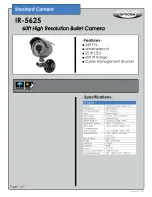
Page. 9
4
.
䎃
Preparing for Operation
䎃
䎃
䦟
4-2.
Outline of operating conditions
Ɣ
The FOCAS-2000 oil concentration detector automatically starts to operate when detecting a water pressure of 0.03 MPa or more at the
sample water inlet.
Ɣ
After starting to run, the oil concentration detector waits for a preset time (warm-up time) until the sample water state becomes stable so as not
to detect a residue in the area between the sample water pipeline and the detection tube. In this state, the three-way valve output signal is off
and the bilge does not drain.
Ɣ
The oil concentration detector has two oil alarm points (Alarm1 and Alarm2). You can set an alarm point (in ppm) in the range of 5 to 15 ppm.
Ɣ
The Alarm1 oil alarm point is in synchronism with the three-way valve output signal. When the oil concentration is less than the specified oil
alarm point, the bilge drains. By the way, when the oil concentration exceeds the oil alarm point, the three-way valve output signal is output to
immediately stop drainage of the bilge independently of the setting of Alarm1 oil alarm delay.
Ɣ
When the water pressure at the sample water inlet falls under 0.03 MPa, the oil concentration detector stops operation, feed fresh water into
the detection tube for a preset time period to keep it clean and leave no residue in the tube, and enters the standby state.
䦟
4-3.
䎃
Preparing for Operation
Ɣ
Be sure to set the clock right before using the oil concentration detector. If not, the oil concentration detector cannot run.
(When the clock is not set, an alarm is output. The alarm is reset, when the clock is set.)
Ɣ
If the oil concentration detector has any error, "Warning [xxx] or Error [xxx]" is displayed on the screen portion of the oil concentration detector
body.
Ɣ
The inside of the external pipe may be fouled with sediment. Be sure to flush clean the pipe inside before connecting the pipe to the oil
concentration detector.
1. Before turning on the oil concentration detector, be sure to check pipe joints and cable connection to the terminal base and make sure they
are firmly tightened.
2. When shipped out from the factory, the clock backup battery is insulated with an insulating sheet. Pull it out to enable the battery.
3. Check and make sure the clock backup battery and the operational log memory card are mounted firmly.
Pull out the
insulating sheet.
Make sure the clock
backup battery is mounted
correctly.
Make sure the operational log
memory is firmly mounted.
Make sure the connectors
are tightly fastened.
Esc
Enter
Make sure the upper lid,
joint, filter, and drain are
fastened tight.
4. Turn on power to the oil concentration detector. Make sure the "POWER" lamp (green) lights.)
5. When the oil concentration detector is turned on, the alarm lamps blink and the LCD screen shows the following.
Esc
Enter
AL. 1
POWER
ᵏᵓᶎᶎᶋᴾᵠᶇᶊᶅᶃᴾᵟᶊᵿᶐᶋ
AL. 2
MODEL
FOCAS-2000
9CTPKPI
A
=%?
AAAAAAAAAAA
46%
A
.QUV
A
XQNVCIG
AAAAAAAA
alarm lamp 2 (red LED blinks)
alarm lamp 1 (red LED blinks)
power lamp (Green LED lights)
6. Set the clock right. See the next page.
Summary of Contents for FOCAS-2000
Page 19: ......










































